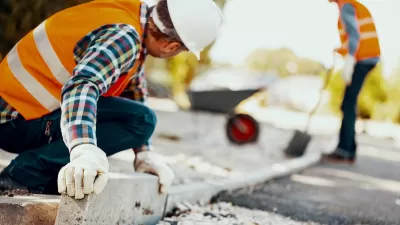A review of the federal government’s recent announcement of a $1 billion competition to provide funding for communities affected by disasters by Dave Hampton, a natural disaster resilience consultant.
A recently announced federal competition to provide funding for communities affected by disasters signals that the buzzword “resilience” might be becoming a concept businesses, cities, and government entities are willing to invest in financially.
Dave Hampton, a natural disaster resilience consultant, looks at the White House’s announcement last week of a competition to award $1 billion in funding to communities seeking to rebuild.
The National Disaster Resilience competition comes after the U.S. Department of Housing and Urban Development’s Rebuild by Design competition, which provided $920 million in federal funding for New Jersey, New York state, and New York City, areas hard hit by Hurricane Sandy in 2012, according to Hampton. This new competition is open to a wider geographical area, Hampton added.
“I predict that communities, in order to pursue this and future funding, will begin to take a partnering approach similar to the U.S. Conference of Mayors, which has continued to make strides towards the reduction of poverty and crime, economic development, and energy efficiency, even in the face of federal (and state) inaction. High hopes that putting its money where its mouth is will help the U.S. shift away from disaster relief and towards disaster risk reduction, adaptation and genuine resilience.”
FULL STORY: $1 billion of federal funding to weave resilience into disaster preparedness

Alabama: Trump Terminates Settlements for Black Communities Harmed By Raw Sewage
Trump deemed the landmark civil rights agreement “illegal DEI and environmental justice policy.”

Study: Maui’s Plan to Convert Vacation Rentals to Long-Term Housing Could Cause Nearly $1 Billion Economic Loss
The plan would reduce visitor accommodation by 25% resulting in 1,900 jobs lost.

Why Should We Subsidize Public Transportation?
Many public transit agencies face financial stress due to rising costs, declining fare revenue, and declining subsidies. Transit advocates must provide a strong business case for increasing public transit funding.

Paris Bike Boom Leads to Steep Drop in Air Pollution
The French city’s air quality has improved dramatically in the past 20 years, coinciding with a growth in cycling.

Why Housing Costs More to Build in California Than in Texas
Hard costs like labor and materials combined with ‘soft’ costs such as permitting make building in the San Francisco Bay Area almost three times as costly as in Texas cities.

San Diego County Sees a Rise in Urban Coyotes
San Diego County experiences a rise in urban coyotes, as sightings become prevalent throughout its urban neighbourhoods and surrounding areas.
Urban Design for Planners 1: Software Tools
This six-course series explores essential urban design concepts using open source software and equips planners with the tools they need to participate fully in the urban design process.
Planning for Universal Design
Learn the tools for implementing Universal Design in planning regulations.
Smith Gee Studio
Alamo Area Metropolitan Planning Organization
City of Santa Clarita
Institute for Housing and Urban Development Studies (IHS)
City of Grandview
Harvard GSD Executive Education
Toledo-Lucas County Plan Commissions
Salt Lake City
NYU Wagner Graduate School of Public Service





























